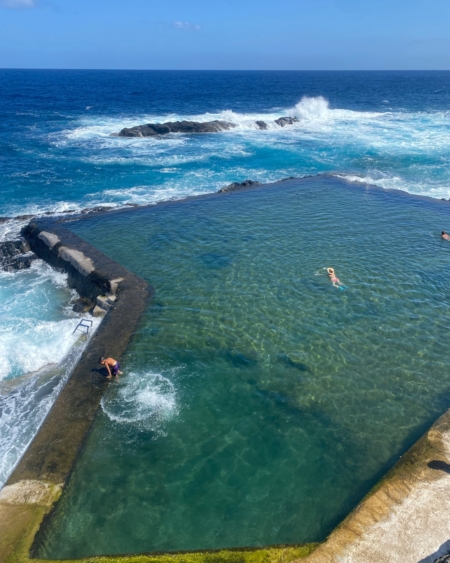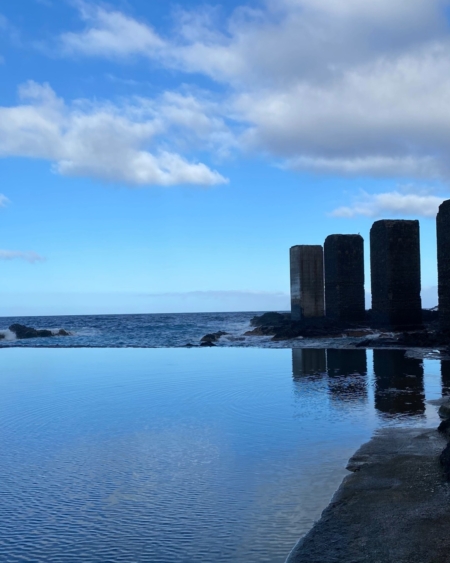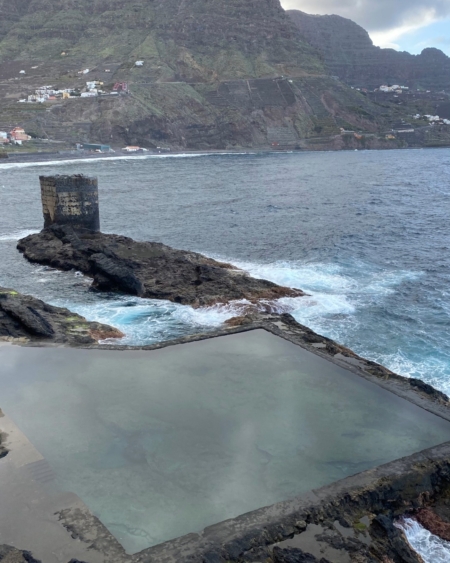On the north coast of La Gomera, in Hermigua, lie two spectacular pools where ocean meets history. Hermigua’s natural pools, set against the impressive Pescante columns, are the ideal place to combine bathing and discovery.
A journey through time
It’s impossible to miss the four massive columns that dominate the site. They are the remains of an old pier built in 1907, used to export bananas and tomatoes from this fertile valley. Today, this abandoned industrial setting lends a special atmosphere to the pools: a blend of the past and the wilderness.
History of pescantes
In the early XXᵉ century, Hermigua made its living from growing bananas and tomatoes. To export these products, a monumental maritime embarkation, known as the Pescante, was built in 1907. Boats docked offshore and cargo was transported by a system of cranes and cables to the ships.
However, this ambitious project had a short life: storms and powerful Atlantic waves eventually damaged the structure, and its use ceased in the 1940s. Today, all that remains are four impressive pillars, which still stand guard over the bay and recall the days when Hermigua was an important export center.
Pescante today
Today, this historic site is transformed into a fascinating natural space, housing two pools. The first, a square pool, is protected from the powerful waves of the Atlantic. With steps and a ramp for easy access, it offers a quiet, pleasant swim. We spent most of our time here, enjoying the calm and freshness of the water.
For the more adventurous, a second all-natural pool is nestled behind the rocks. Here, the waves strike with force, creating an impressive spectacle and offering a more direct immersion with the ocean.
This place is not only a tourist destination, but also a meeting point between human history and raw nature. The power of the ocean and the traces of the industrial past blend harmoniously, making our visit unforgettable.
Practical info
-
Access: by car, parking is available nearby. By bus, it’s about a 45-minute walk.
-
Facilities: there’s no infrastructure on site. Bring water, a snack and sun protection.
-
Safety: stairs can be slippery, especially when exposed to sea spray.
-
Seasons: in summer, the site is sunnier and busier, with pleasant water for swimming. In winter, there’s often less sun in the Hermigua valley, giving it a different, quieter atmosphere.
Conclusion
Today, the Pescante and its natural pools are above all a place to relax and pass through, appreciated by locals and visitors alike.





